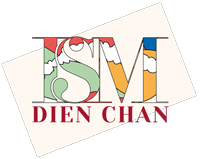Treating Torticollis (cervical dystonia)

Cervical dystonia, also known as spasmodic torticollis, is a neurological disorder characterised by involuntary and sustained muscle contractions in the neck.
These contractions can lead to abnormal movements and unusual postures of the head and neck, causing significant pain and discomfort for those affected. Cervical dystonia can occur at any age, but it is more common in adults and tends to be chronic if not properly managed.
Symptoms of cervical dystonia include:
- Rotation of the head to one side (torticollis)
- Tilt of the head forward (anterocollis) or backward (retrocollis)
- Head tremors
- Pain and stiffness in the neck and shoulders
According to Western medicine, the exact causes of this disorder are still not well understood. Doctors consider genetic factors, trauma, or side effects of certain medications.
Dien Chan Solution for Cervical Dystonia
Dien Chan, an original method of facial reflexology, offers a natural and holistic approach to relieve pain and release tensions caused by cervical dystonia. By stimulating specific reflex points on the face, we can help the body regain energetic balance and reduce involuntary muscle contractions.
Dien Chan Treatment Plan
General Condition Management

- Objective: reduce stress, often associated with cervical dystonia.
- Technique: stimulate the zones of bqc·points 124· 34· 26· and 8· using the Little-hammer nº128.
- Perform about fifty light taps with the rubber tip. Repeat this step whenever symptoms arise.
Body Step

- Objective: relax the neck muscles.
- Technique: use the Double yang ball nº411 (or the Double mini yin roller nº308 for a thinner neck).
- Gently roll the neck for about 2 minutes. Check with the person if the sensation is pleasant, then continue for an additional 4 minutes if necessary.
Reflex Step

- Objective: inform the brain to focus on the neck.
- Technique: use the yin roller of the Yin-yang roller nº206.
- Perform about fifty gentle back-and-forth movements between the eyebrows. Then roll between the top of the ear and the end of the left eyebrow, and repeat on the right temple. This technique helps to disperse accumulated tensions in the neck and corresponds to important reflex zones according to the reflex diagram of Mr Yang and Rodin.
Consolidation Step
- Objective: personalise the treatment according to the specific needs of the person.
- Technique: create a constellation of bqc·points.
- Recommended points: 156· 159· 87· 365· 163· 50· 290· 100· 65· 564·.
- Test these points using the Detector nº101. If you are a beginner, use the Little-hammer nº128 for optimal comfort.

Complementary Advice
Hydration: Ensure that the person drinks enough water throughout the day to avoid muscle tension.
Relaxation Exercises: Encourage regular practice of yoga (Pilates, etc.) to reduce stress and improve muscle flexibility.
Posture: Advise maintaining good posture daily and avoiding prolonged positions that could exacerbate muscle tension.
Self-care: Suggest acquiring the multireflex tool that has provided the most relief, usually the Yin-yang roller nº206 or the Little-hammer nº128, to continue self-care treatment.
By incorporating this Dien Chan care plan into your sessions, you will help your clients relieve symptoms of cervical dystonia and improve their quality of life in a natural and holistic manner.
To go even further, we recommend training with Dien Chan experts. By following their advice and teachings, you can master the techniques more thoroughly and offer even more effective care to your clients.
We hope this information is helpful and invite you to subscribe for free to our channel at www.DienChan.tv. There, you will regularly find videos to help you master the various Dien Chan techniques and refine your skills.
— Dienchanly yours —

